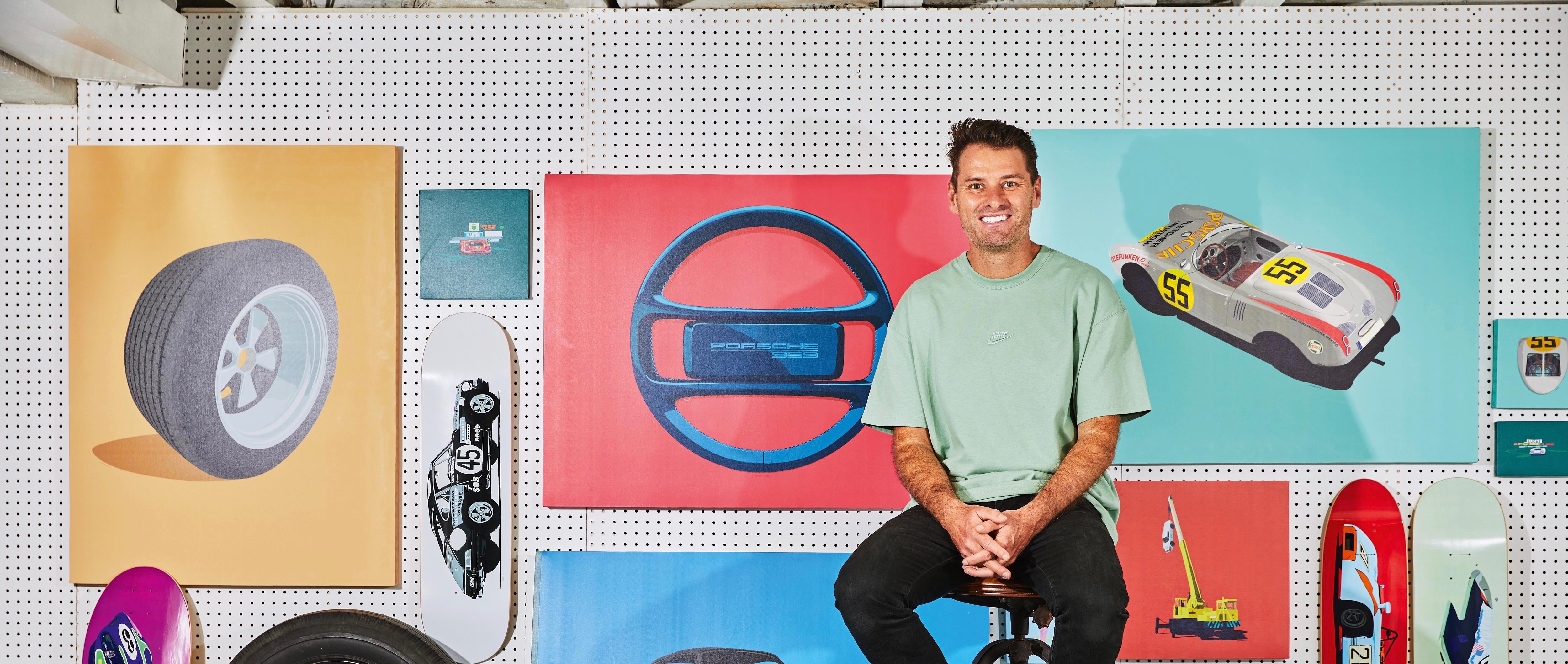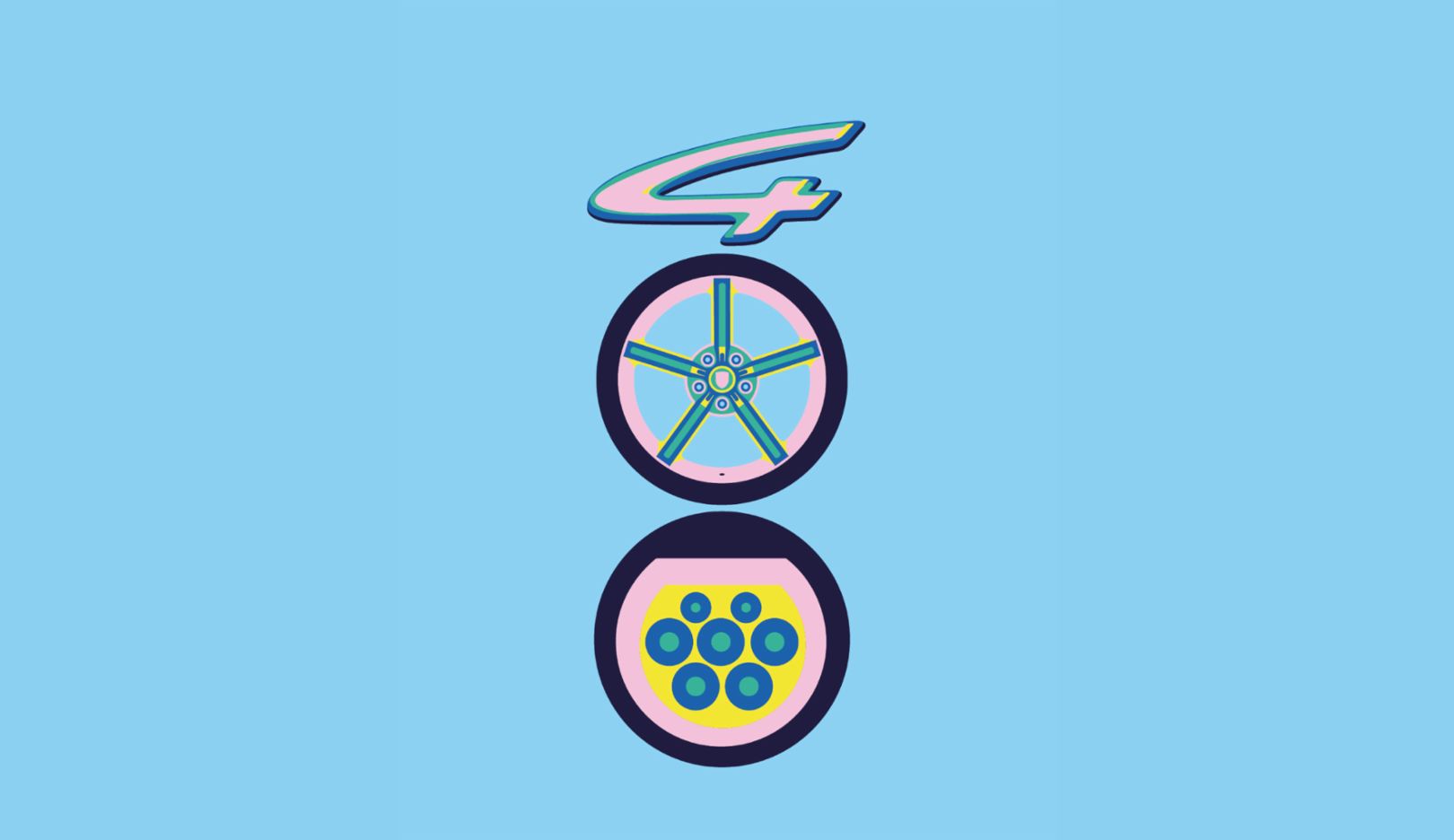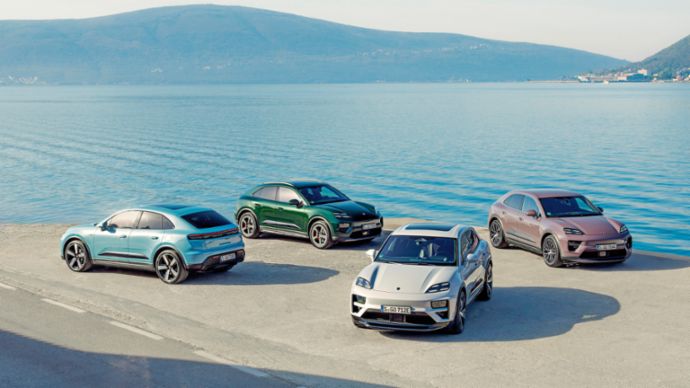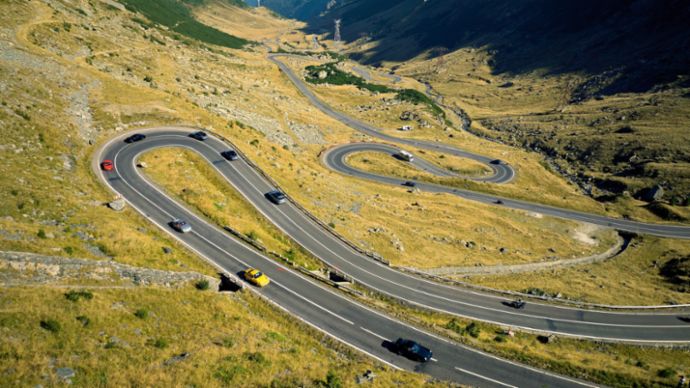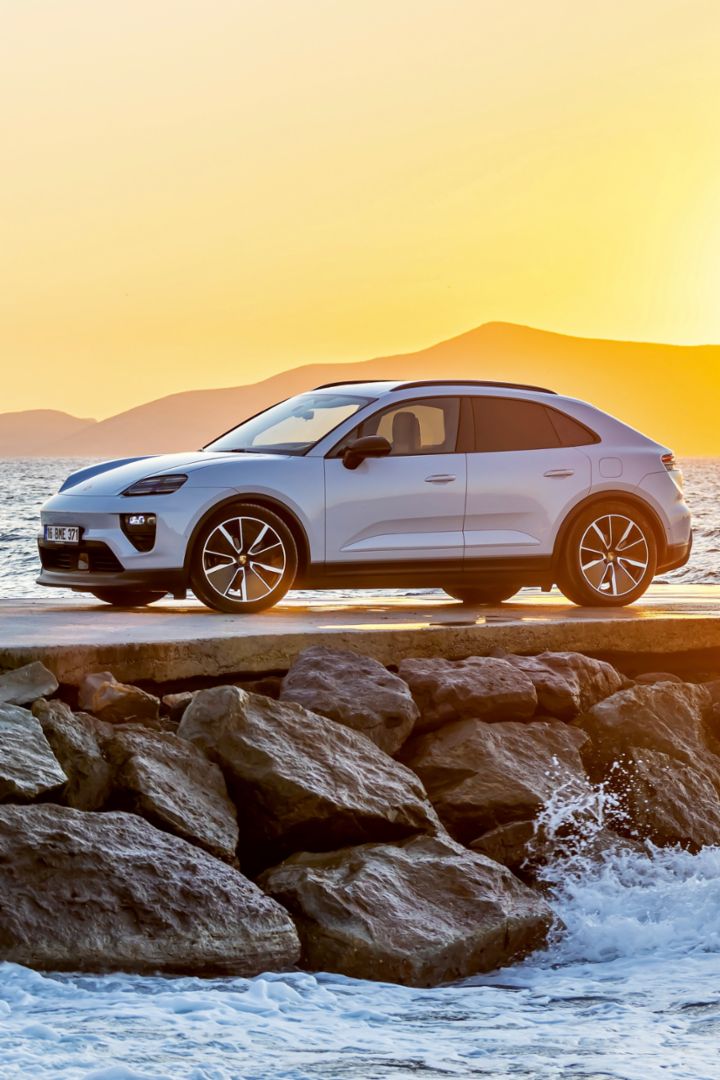The Joy of Color
Jeffrey Docherty blends playfulness and hidden meaning with a passion for lines, colors, and historical racing cars into works of Porsche art. One of them graces the cover of the 400th issue of Christophorus.
“Christophorus is part of Porsche’s DNA.” Jeffrey Docherty
Jeffrey Docherty (42) scrolls through a collection of his work on an iPad at his home in Portland, Oregon. One illustration shows the rim of a 1960s steering wheel in yellow instead of the original shade of wood, on a salmon-hued background. Docherty likes working with colors that acquired cult status as paint on Porsche cars in the 1960s and 70s—his two favorite decades. He has an eye for a special aesthetic found largely in motorsport motifs from this era. Six years ago he began using Porsches in his drawings. His designs, which are primarily released on Instagram, have attracted a worldwide community of fans. “I’m always looking for surprising ways to interpret moments in racing history,” he explains. The result is a fresh take on familiar images with new beauty and unanticipated meaning thanks to clever abstractions, humor, and the evocation of deeper levels of meaning.
A sensational piece at the Art Basel in Miami served as an inspiration to Docherty in 2019. Italian artist Maurizio Cattelan had affixed a banana to a wall with a silver-grey piece of tape. The curved fruit reminded Docherty of a Porsche brake caliper. He kept the grey tape but selected a sky-blue background and replaced the banana with a caliper painted yellow. He had hardly posted the work on Instagram when it went viral. “It made people smile and got them talking,” he says with pleasure. “I was able to transplant a moment from the exclusive world of art to the automotive world, to combine it with something I’m passionate about.”
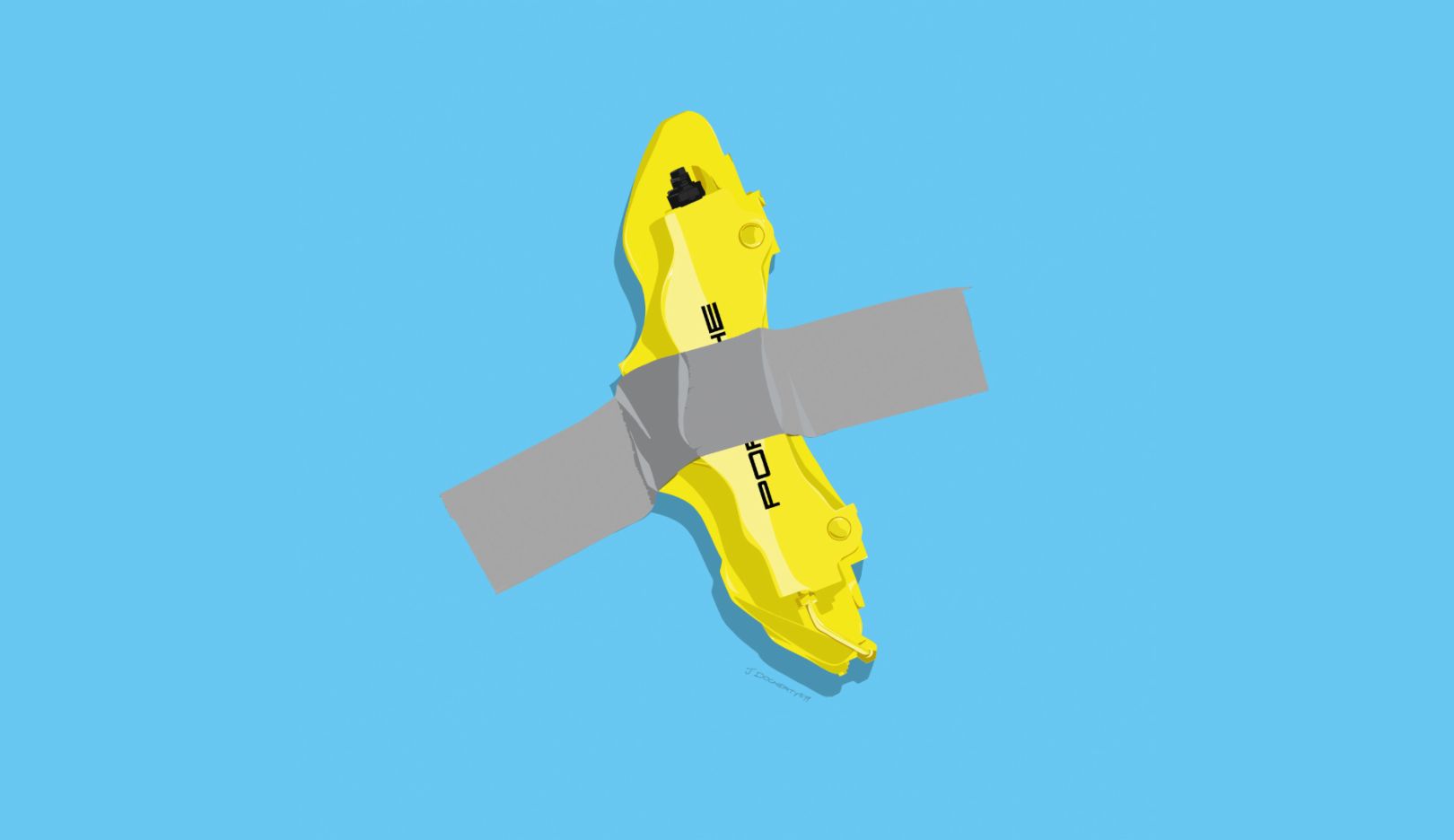
Docherty has worked in the creative sector for more than twenty years and is now senior creative director for Nike. He has loved and drawn cars since childhood. At some point his twin passions for design and cars were able to merge. Initially he was particularly interested in air-cooled Volkswagens, “but then I was captivated by the early Porsche models.” That in turn led to his first playful iconic works. And he acquired his first sports car from Zuffenhausen, a Porsche 911 SC. Although the vehicle was built in 1978, its owner added visual details to date it back a few years. Docherty loves not only cars from the aforementioned decades but also racing suits, helmets, stickers, and patches of all types. He’s fascinated by the Porsche brand and its unbroken tradition of racing, and waxes lyrical about its subtlety, finesse, and reserve. “There’s a timeless beauty to its design,” he observes. “Everyone knows what a Porsche is capable of. So the aesthetics don’t need to go overboard, and can afford to have a marvelous quality of understatement.”
As the pandemic went on, Docherty produced many works in the basement of his home, which houses his studio as well as a slot-car racing track and archive. The latter contains prints of his illustrations, self-designed skateboards and bath towels, Porsche model cars, and books—including one about Erich Strenger. Docherty considers Strenger, who immortalized Porsches in flyers, posters, and ads for nearly forty years starting in 1951, a major inspiration for his own work.

He opens a steel cabinet and pulls out a few old issues of Christophorus. “I bought them because I was curious about the illustrations, photos, and ads of that era.” The chance to design the cover for the 400th issue of the magazine is an honor, he adds. “Christophorus is something very special, a part of Porsche’s DNA.”
The understated quality of the brand’s design is a good match for the personality of this native New Zealander. Docherty is reserved by nature. The publicity generated by his Instagram channel is still of a magnitude he finds pleasurable. Now he is also illustrating books about Porsche. Race-car drivers commission him to design helmets. And for the organizers of the GP Ice Race in Zell am See—Constantin Klein and Ferdi Porsche, the son of Dr. Wolfgang Porsche—Docherty designed a Porsche 911 as an art car.
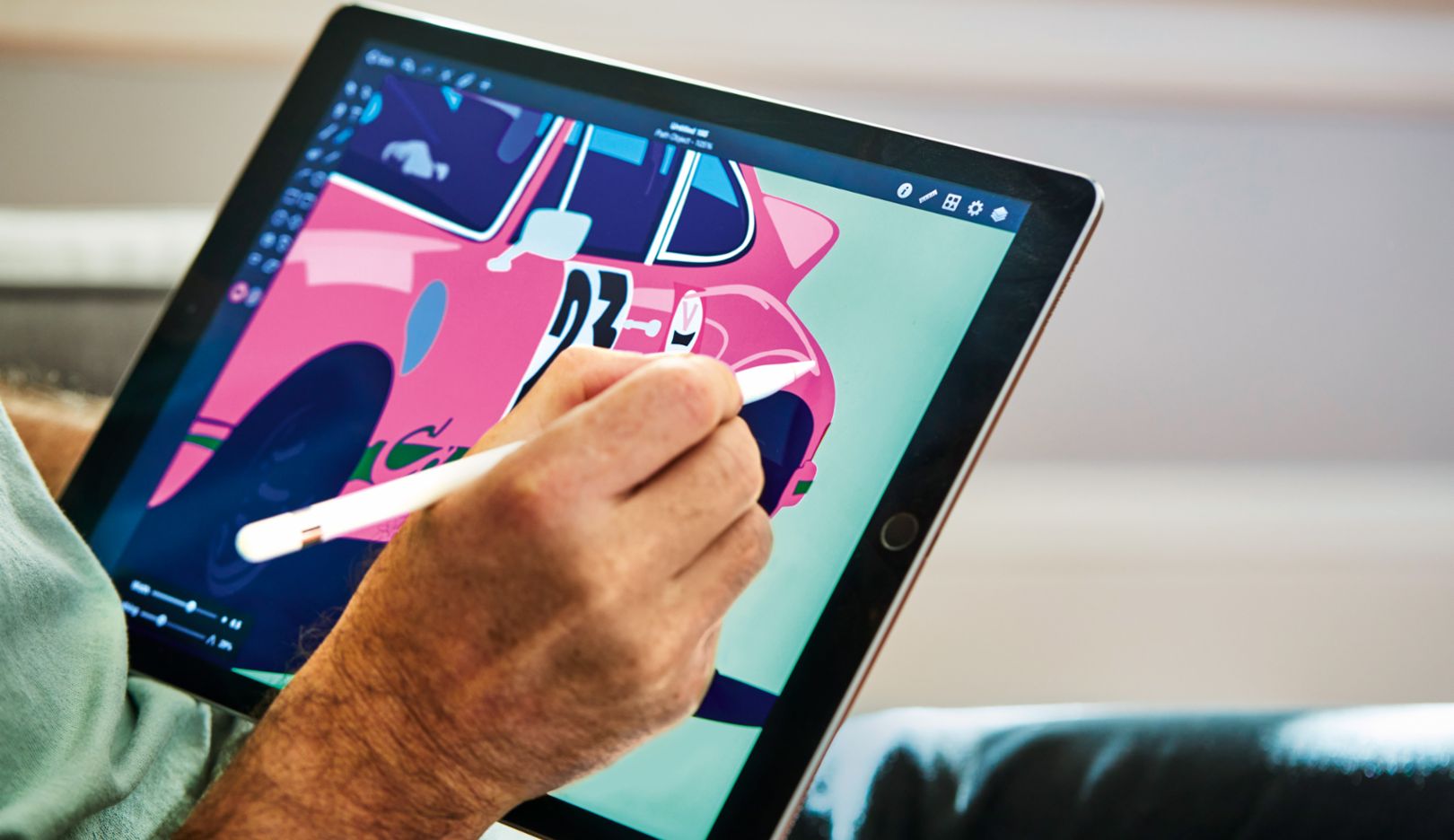
Relaxation:
Drawing on an iPad is how Docherty relaxes and recharges.A passion for older cars runs in Docherty’s family. His father and grandfather were mechanics in Twizel, a town of 1,600 on New Zealand’s South Island. “My dad also worked for a racing team and would drag his family to vintage automotive events almost every weekend,” he recalls. Afterwards, he and his brother David would draw the cars or make models of them from cardboard. The family moved to Christchurch, where Docherty got into skateboarding as a teenager and started creating graphics for local skate shops and snowboarding brands. “I’m one of those fortunate individuals who knew at a very young age what they wanted to do.”
He went to art school, joined a design studio, and moved to Australia in 2003, where he worked for magazines and agencies. Melbourne was where he met his wife, American-born Jenafer Matthews. They settled in New York, where his work appeared in places like The New York Times Magazine. At studios and editorial offices he learned to tell stories with illustrations instead of just producing “pretty pictures.” The couple moved to Portland in 2012, where they live with their eight-year-old son Asher.
When Docherty gets into his Mexico Blue 911 SC, he only has to drive a block or two from his home to meet up with fellow members of the Porsche brand community. Arbor Lodge, the neighborhood in the north of Portland where he and his family live, is home to not one but two garages where Porsche enthusiasts can look after the needs of their classic charges. Docherty stops for a chat. “The Porsche community in Portland is like a family,” he says after a few minutes of talking shop. “Everyone is connected in some way or another, or knows someone who’s active in the community.” Our jaunt through the city is accompanied by the sound of high-speed engines wafting over from Portland International Raceway. “I think it’s marvelous,” he says with a smile.
The tour leads to See See Motor Coffee in the nearby hipster neighborhood of St. Johns. From here it’s only two minutes to St. Johns Bridge—a gateway to the hills of West Portland, with winding roads, verdant landscapes, and spectacular panoramas. Docherty enjoys the leisurely drive. For him these excursions are as relaxing as his Porsche art. “All I need is my iPad and stylus and I can draw wherever I am,” he says. “It’s a great way to relax and recharge. And it should stay that way. This is one passion that should never be put under pressure or made to feel like work.”
Consumption data
911 Turbo
Macan Electric
-
19.4 – 16.8 kWh/100 km
-
0 g/km
-
A Class
Macan Turbo Electric
-
20.7 – 18.4 kWh/100 km
-
0 g/km
-
A Class
Taycan 4 Cross Turismo (2023)
-
24.8 – 21.4 kWh/100 km
-
0 g/km
-
A Class
Taycan Turbo (2023)
-
23.6 – 20.2 kWh/100 km
-
0 g/km
-
A Class
